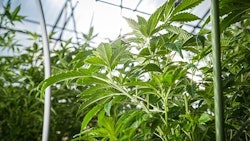Southern University and A&M College in Baton Rouge, La., has launched a hemp product line, making it the first historically black college or university (HBCU) to do so.
The university, which is the largest HBCU in the state, launched its hemp product line, ALAFIA, last week in partnership with Ilera Holistic Healthcare, a medical cannabis company based in Pennsylvania. ALAFIA offers an isolate and full spectrum cannabidiol (CBD) tinctures, which are expected to be available at Louisiana dispensaries and other retail locations by the end of March. Additional products will be announced soon.
“Our overall goals are to continue providing experiential learning opportunities for our students who plan to enter into this rapidly evolving industry and to also provide education to the constituents of Louisiana in efforts to destigmatize this medical plant,” said lead researcher, Janana Snowden, Ph.D., executive director of the university’s Southern Institute for Medicinal Plants, to NBC News.
























